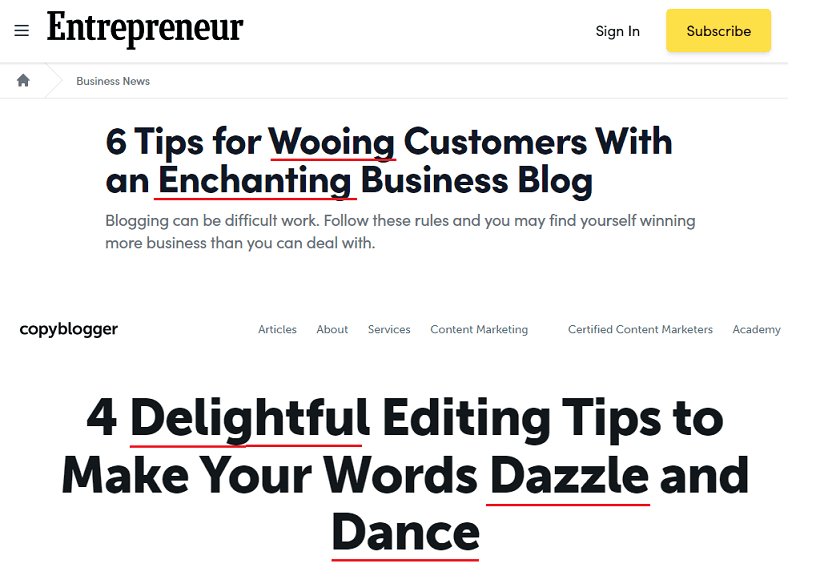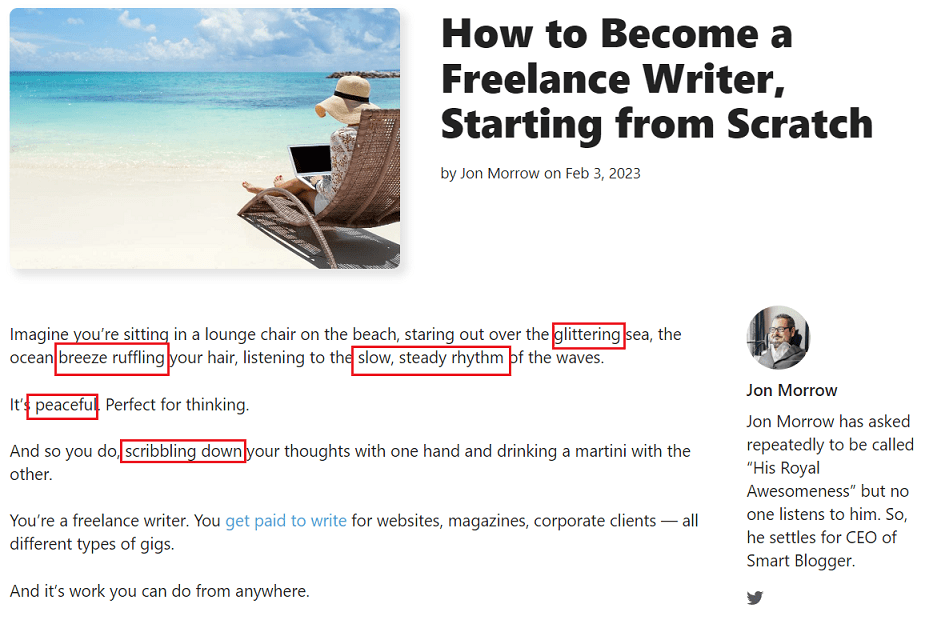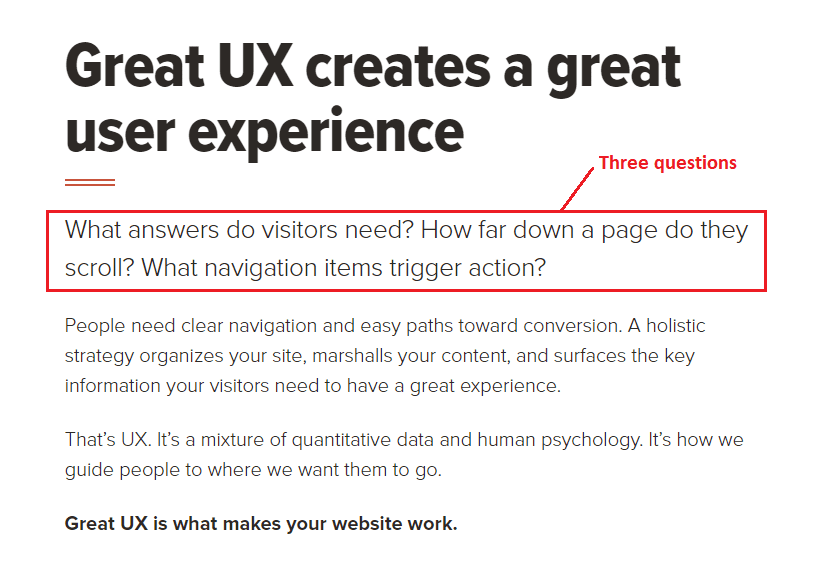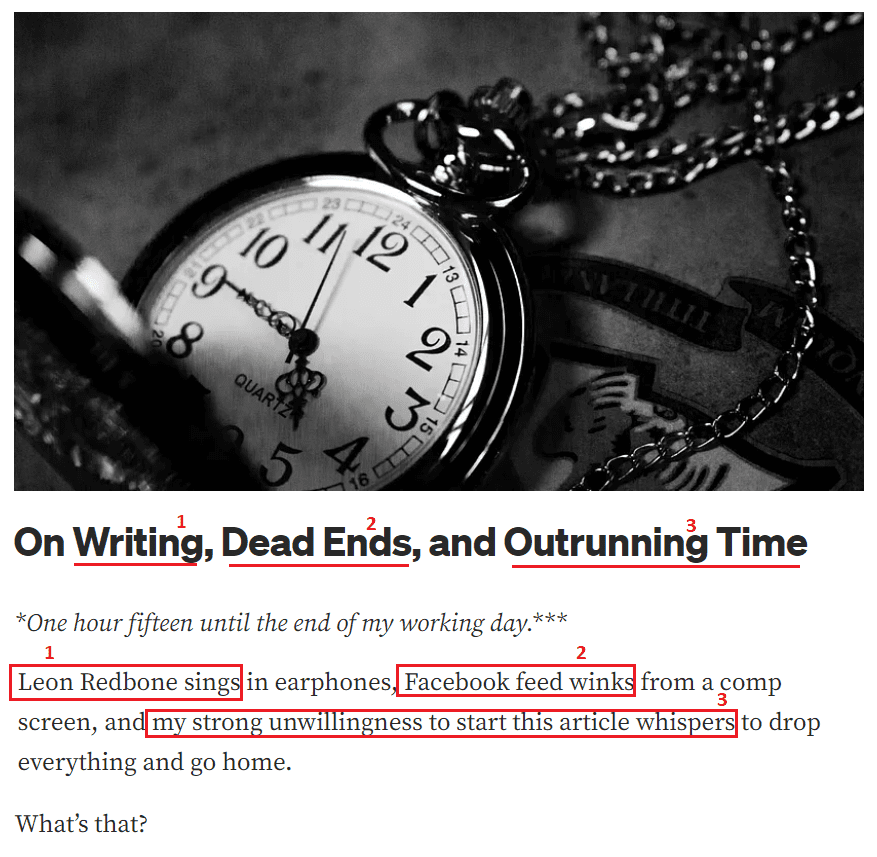You want your content to engage and convert.
Guess what? Competitors want the same, struggling for every user and making them sink into the ocean of marketing messages. As a result, we have a world of content shock and banner blindness, compelling us to look for alternative tactics for user engagement.
How do you make the audience want to listen to you?
Make them feel something. Engage them on an emotional level, and you’ll get them hooked. Craft content that would align with your targets’ values and reflect your brand’s nature, causing emotional resonance.
This effect will help your message stand out.
In this guide, I’ll show you how to cause such resonance with your content using emotional writing tactics.
What is emotional writing?
Emotional writing is a technique of crafting your texts with specific lexical items, word combinations, and visual hooks to get the audience immersed and willing to respond.
It used to be more typical for literary texts a la novels, where storytelling components and emotional narrative are critical to immerse readers and evoke their response. Today, when we consume most information online, people look for relative conflicts and emotions on websites and social media.
They demand content that triggers some feelings rather than shares bare facts. Emotionally intelligent, they are super picky, fed up with the same-looking blog posts, and unwilling to spend time reading superficial, inexpressive content assets ChatGPT generates now.
Emotional writing tactics can help you create content that appeals to this demand.
Emotional writing tactics to use in marketing content
Below are five tactics to try for stellar user engagement and conversion of your content marketing endeavors. Practice those relevant to your brand voice and content strategy, and don’t hesitate to test others. (Spoiler: All five work to get readers hooked on your message.)
1. Consider the Story Grid
Here is the most common copywriting mistake some content creators still make despite tons of info on buyer personas’ needs.
They write in a way that makes sense to them, communicating what they want to tell, not what the user wants to hear at that very moment when they read the asset.
Human needs have a progression. We have all heard of Maslow’s Hierarchy of Needs. It determines human concerns depending on the pain points and motivations this human has. Understanding the full range of those needs and knowing where your target reader is at the moment, you can:
- Discover your content’s core value and the emotion readers expect to get from it.
- Determine what topics to choose and how to communicate a message so readers will reflect on it.
Core values and emotions are about choosing a proper content form (writing genre) for your assets. Consider the Story Grid by Shawn Coyne, the analogy with Maslow’s Pyramid. Users will pay more attention to story genres reflecting their current needs.

Do they crave esteem? Share how-tos or content about trends in your niche. For those in self-actualization, stories about achievements or inventions may work. If your targets are in self-transcendence, craft stories about sustainability and moral values.
2. Appeal to basic instincts
Basic instincts are subconscious needs appearing in the brain’s limbic system and are responsible for our emotions, motivation, and behavior.
There are three:
- Self-preservation, responsible for safety, health, and secure environment. It makes people respond to the content helping to achieve that. (Think of the crazy popularity of food and lifestyle blogs.)
- Social, making us crave personal value, status, achievements, and approval. Willing to succeed, we’ll respond to the content proving we are awesome and special.
- Sexual, responsible for attraction, connections, and adrenaline. (Some marketers continue to abuse it, believing it’s about the “sex sells” mantra, though it doesn’t work for all industries.)
How to write content that boosts emotions and engagement by appealing to these three subconscious needs?

Use “tasty” images and words in your content assets. Even if your niche is not about food, you can make this writing trick work. Many blogs use “tasty” words in headlines; for example:
- Food for Thought: The Content Strategy Burger [INFOGRAPHIC]
- Your Inbound Marketing Strategy Needs a Pinch of Outbound-Style Assertiveness
- The Marketing Funnel Ice Cream Cone: Turning Leads into Customers
The same trick can work with “lust” words in headlines to grab attention and trigger emotions:

“Naughty,” “brazen,” “love,” “captivating,” “seductive,” “forbidden,” “spicy,” etc. – all are powerful when used right. (Don’t write these words for clickbait; consider your niche, tone of voice, and the context of your content asset.)
Answer questions to satisfy a user’s social instinct. Help them find answers by sharing content that solves problems and tells them how to interact with the world. Write about tools, strategies, tips, hacks, insights, and secrets.

Invite them to take action. Make the audience feel involved and create the illusion of presence. For that, post interactive content when appropriate: tests, quizzes, surveys, slides, etc.
Show they can do it. The “you can do it!” mantra is a powerful trigger. While craving approval and success, we look for easy ways to get it. (No surprise: The brain is lazy.) Appeal to this in your content. The minimum you can do is mention words like “fast,” “simple,” “beginner-friendly,” etc. in headlines and structure content assets accordingly.

3. Use the power and sensory words
The most precise definition of power words comes from Jon Morrow. He also shares the list of 800+ such words to use in writing.
Power words are persuasive, descriptive words that trigger a positive or negative emotional response. They can make us feel scared, encouraged, aroused, angry, greedy, safe, or curious. Authors, freelance writers, copywriters, and content marketers use them to spice up content and compel audiences to take action.
How to incorporate power words in content?
- Use active voice.
- Say no to weak (redundant adverbs) like “very,” “really,” “just,” “actually,” “extremely,” and other -ly words.
- Add descriptive adjectives to elicit emotions in readers.
- Pinch the information with sensory details.
Henneke Duistermaat is a master of sensory language in her content. She describes it as words appealing to our five physical senses and helping us see, hear, smell, taste, or touch the content we read.

Why are they so effective? It’s science again. A certain part of our brain activates when we read sensory words; we process them faster than other lexical items.
As a rule, sensory words are adjectives though they can also be verbs. With their help, you can paint scenes in readers’ imagination and make your message stand out in the sea of same-looking content assets.
How to incorporate sensory words in content?
Use them in headlines:

Add them to your business profiles on social media:

Write content intros with sensory words to grab attention and evoke desired emotions in readers:

Product descriptions, business emails, author bios – all they benefit from power and sensory words.
4. Add beneficial adjectives
While sensory language adjectives are descriptive, beneficial ones are those explaining the “What’s in there for me?” objection your content consumers have.
Why should they read your content?
What makes it so unique?
Why is it worth their attention and time?
Add beneficial adjectives in headlines and subheads. These are the first elements users see when scanning your content to decide if it’s worth reading.

The problem:
Most content creators know these words and their effect on readers: attention-grabbing and click-triggering. Adjectives like “free,” “cost-effective,” “ultimate,” “unique,” “quick,” “exclusive,” and others are so over-used that readers are skeptical about them.
And then another objection appears: Yeah, right. You all say that!
Take a step further to solve this problem. Combine two rarely matched adjectives related to the same noun, and ensure both are emotional enough for users to get engaged.
- 10 Best Free Floor Plan Design Software to Use
- Straightforward Yet No-Nonsense Guide To Making Money Online
This trick with beneficial adjectives (and power/sensory words already described here) relates to neuro-writing tactics influencing readers’ engagement and motivation to learn more about what you have for them.
Below are others to make readers emotionally connected to the information you share.
5. Try neuro copywriting tricks
Neuro copywriting relates to creating content with specific language patterns to appeal to human psychology and motivate the reader to learn more.
It’s about applying particular words (like those power and sensory ones), word combinations and sequences, and content formatting tricks to trigger an emotional response. Such tiny instruments hook the audience and make them stay with your content.
Here are some you can try for more expressive writing:
Ask questions in subheads. To appeal to the social instinct, help readers understand what they’ll get, and spark curiosity to continue reading. (They’ll wonder if there’s something new in your answer.) Like here:

Design headlines and subheads as quotes to signal expertise and authoritativeness and build trust. Take quotes from industry experts or take a sentence from your content and format it with quotation marks.
This tactic works best with press releases or case studies.
Practice the Socratic method when applicable. This method is about asking questions to stimulate critical thinking. Given that the human brain grasps three best, try three questions in a row in your content.

It also relates to the Rule of Three in writing. Put questions, statements, or bullet points in a sequence of three if you want the audience to remember it.

Bonus: Phonosemantics
This one is for advanced writers willing to take a step further in emotional content creation. But first, the question:
Which one of these two shapes is Bouba, and which one is Kiki?

If your Bouba is the rounded one and Kiki is spiky – congrats! You’re among the 95% of people thinking so. Known as the bouba-kiki effect, this concept relates to sound symbolism claiming that each sound (phoneme) carries a particular psychological impression.
We call the rounded one Bouba because its visual shapes align with what our lips do when saying this word.
Long story short:
If you want to evoke particular emotions in readers, choose certain phonemes and combine them accordingly when writing to influence readers’ perceptions.
Here go the associations some phonemes trigger, according to the Phonosemantics theory:
- /b/ – round, big, and loud
- /gl/ – shining, smooth, brightness
- /r/ – movement and activity
- /p/ – precision and patience
- /o/, /u/, /e/ – powerful, strong, authoritative
- /l/, /n/ – soft, gentle
- /i/, /ee/ – small size, tenderness
- /mp/, /str/ – force, efforts
The tactic works best with business names, slogans, or headlines.

For added effect, you can also try writing instruments like repetition and alliteration, soundbites, or bucket brigades (transitional words) in text bodies. All are great to affect a reader’s comprehension and influence their emotions.
In a word
Emotional writing is your sure-fire instrument to make content stand out and communicate your message to the target audience who are tired of same-looking and pale content assets online.
Emotionally invested in your writing, they are more likely to read, remember, and tell friends about you. Engage them on an emotional level with the bunch of tricks described in this post – and you’ll get them hooked.
Why not start with “tasty” and sensory words in your content?




